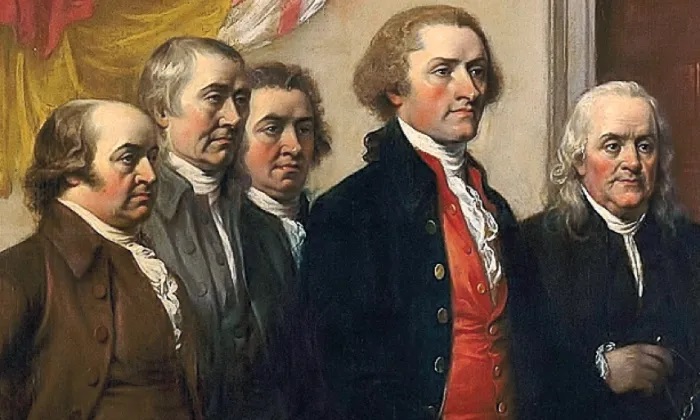Last week was the 13th anniversary of ItsEthicsStupid.com, (I’m exhausted), and it began after a comment that was consistently repeated after my talks: Your message could not be more timely.”
Sadly, that remains truer than ever.

Greek philosopher Diogenes of Sinope searching for an honest man.
The following three stories come from a 2020 top ten list, compiled by Jaclyn Jaeger for “Compliance Week,” an online resource for compliance managers around the country.
Wells Fargo
“People can trust Wells Fargo to do the right thing, yes.”
“That was the response given by Wells Fargo CEO Charlie Scharf during a Congressional hearing in March when he was asked whether customers can trust the scandal-plagued mega-bank in the wake of its failure to stem abuses in its banking, lending, and auto insurance divisions.
“New evidence in the months following that hearing, however, pointed to the opposite being the case. According to a Wells Fargo internal memo, more than 100 employees were fired for creating fake profiles and filing fraudulent applications to get money from the Small Business Administration relief program—a program intended to help struggling small businesses amid the coronavirus pandemic. An asset cap placed on Wells Fargo in 2018 following the fake account scandal had temporarily been lifted by the Federal Reserve Board in order to grant the bank greater access to administer these loans, and this is how its employees repaid the gesture.
“This is just the latest indication Wells Fargo still has a long way to go in instilling a culture of compliance—then the rebuilding of trust can begin.”
Pacific Gas & Electric (PG&E)
“New allegations point to PG&E being at fault for one of the recent wildfires in California: Equipment from the embattled utility is suspected in the Sept. 27 Zogg Fire in Shasta County north of Sacramento, which would be the latest in a list of such catastrophes spanning decades.
“In July, the California Department of Forestry and Fire Protection (CAL FIRE) found PG&E responsible for the October 2019 Kincade Fire in Sonoma County, which was “caused by electrical transmission lines owned and operated by [PG&E].” The Kincade Fire burned roughly 78,000 acres and destroyed 374 structures in the region.
“Also this summer, PG&E exited Chapter 11 bankruptcy after agreeing to a $24.5 billion payout for wildfires it caused in 2015, 2017, and 2018. In June, PG&E pled guilty to 84 counts of involuntary manslaughter for the 84 lives lost in the 2018 Camp Fire.
“An Oct. 16 letter by court-appointed monitor Mark Filip of law firm Kirkland & Ellis concluded PG&E had intentionally prioritized inspections in areas that posed a lower risk for fire and required little to no tree trimming so it could more easily meet state-mandated targets for inspection and remediation work. “[A]s the company pushed to meet its 2,455-mile [Enhanced Vegetation Management – EVM] target for 2019, it did not prioritize wildfire risk reduction according to its risk model,” the letter stated.
“The letter was directed to U.S. District Judge William Alsup, who oversees PG&E’s criminal probation in a case related to the fatal San Bruno pipeline explosion in 2010. In the letter, Filip concluded the inspections and related analyses “identified material shortcomings in PG&E’s progress, as compared to its stated goals regarding wildfire risk reduction. This is not to say that the EVM and other wildfire mitigation work PG&E completed in 2019 and 2020 did not result in a meaningful reduction in the wildfire risk profile—they did, and directionally the risk profile is being lowered—but it strongly appears that the company failed to adhere to its risk models in its work execution and could have done better under its own chosen metrics and approaches.”
“In court documents, PG&E denied the findings and argued it was not its intent to schedule work based solely on risk ratings. Nonetheless, PG&E continues to demonstrate it has miles to go to effectively enhance its governance, risk mitigation, and operational safety measures. And lives are at stake the longer it takes.”
National Rifle Association
“One of the most politically polarizing associations in the United States came under fire (pun intended) after the New York attorney general sued the organization for a decades-long pattern of alleged fraud. The suit calls out the CEO and several top leaders by name, accusing them of puffing up expense reports with illegitimate trips and purchases to the tune of $64 million. Among the internal control failures cited by the New York AG is the lack of a chief compliance officer … or even a compliance department.”
What will it take to turn things around?
Companies and organizations should educate executive members as well as front-line employees to adopt the three Cs of ethics as advocated by ethicist and teacher, Michael Josephson:
“Commit to a set of standards you know to be right…. but those standards should also reflect a deep commitment to being responsible and accountable for all your decisions along with a sincere desire to strive to do your best in all circumstances.
“Raise your Consciousness of ethics in the decisions you make – Are you treating others honestly, fairly, with respect and consideration? Are you using ethics as ground-rules of behavior?
Enhance your ethical Competency – One way to make clear and consistent ethical decisions is to adopt the Decision-making Model advocated by the Josephson Institute of Ethics:
- An ethical decision-maker considers the interests and well-being of ALL likely to be affected by their decisions.
- An ethical decision-maker makes decisions characterized by their core, ethical values of Respect, Trustworthiness, Responsibility, Fairness, Citizenship and Caring. These principles always take precedence over non-ethical values – such as hard work, money, fame, competitiveness, sense-of-humor, etc.
- If it is clearly necessary to choose one ethical value over another, the ethical decision-maker will do the thing that he or she sincerely believes to be best for society in the long run.
The conclusion I wrote at the end of that first commentary remains as vital today as ever.
How we act will determine the purpose and course of our lives.
Comments










